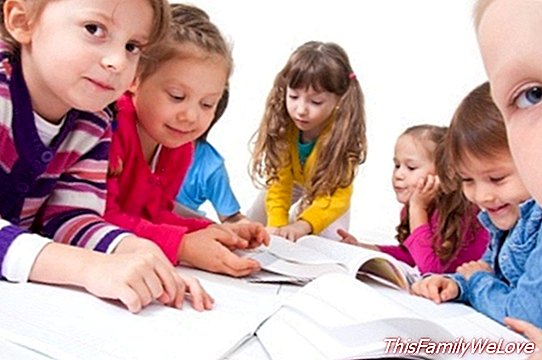Study techniques, the best way to learn


What factors influence the performance of children? At Teaching process is as important as how it is taught as how you learn. The difference between learning methods among students from the same school is one of the reasons why there is a greater difference between students in a class than between schools.
Although all students in the same class are exposed to the same tasks, not all use the same resources to learn. There are different factors that can affect the effort and results are not perfectly correlated. The most common reason why, despite great effort, great results are not obtained is the lack of effective learning techniques. Another of the most important reasons is usually the lack of school reinforcement when needed.
Tools to learn effectively
There are different tools to study better to use when learning. Between 6 and 12 years is when they choose and determine the preferred ways of learning that we will maintain throughout our lives. Within the main types of learning we find:
1. The mechanical character, distinguished for being repetitive, mechanical and automated.
2. Meaningful learning, known to establish congruent relationships between different knowledge and content to be learned.
Meaningful learning seeks to establish links and relationships between what we already know and what we are going to learn. Studies show that students learn more optimally when they have the opportunity to use their own experiences as a basis for their learning process (Kraft & Billing, 1997).
The National Association of American Infant Education emphasizes the importance of direct, interactive and personal learning and argues that during primary school students learn best when teaching is meaningful, active and through personal experiences (NAEYC, 2009).
A longitudinal study of the different learning styles concluded that those students who actively participate in the development and facilitation of their own learning are better long-term students (Allen-Malley & Brinegar, 2007).
The theory of meaningful learning is fundamentally focused on avoiding non-comprehensible knowledge, that is, on trying to make the student discover a meaning to the concepts he learns, so that they can relate adequately and coherently with the concepts already learned previously, present in its cognitive structure. The theory emphasizes the importance of the active role of the apprentice, holding him responsible in his own pedagogical process. The aim is that the learning contents become personalized knowledge.
How to develop a good learning technique
1. Motivation. It is the first step to achieve good learning and study techniques: it is studied to learn and not to get good grades, since that leads students to take shortcuts that harm long-term learning. It is important for children to think about what they learn and help them understand that even if they do not see that what they are studying has functionality in their future, it does.
In school, content is as important as the way in which our mind is structured by studying different itineraries. This learning shapes our way of thinking, our perspective on problems and our approaches to solving them. It does not have much functionality to learn mechanically to repeat paragraphs without understanding or assimilating them since it does not help neither to structure the mind nor to reinforce new knowledge. Helping our children to be aware of what they learn will motivate them to learn in turn.
2. Learn in a meaningful way. The second step is to develop techniques that facilitate the study. Many times the mechanical learning arises from the lack of ideas of entrenchment. To prevent students from learning by heart exclusively, Dr. Ausubel, the psychologist who developed the theory of meaningful learning, proposes the "previous organizers" that aim to facilitate meaningful learning. The previous organizers are a didactic strategy where you try to make a nexus, a cognitive bridge, between what is known and what you want to know. When new learning is incorporated into an already established knowledge network, it is much easier to access that knowledge and optimize it.
This can be achieved by teaching our children to do use of concept maps. This technique aims to teach how to learn, creating connections between different elements with internal coherence and encouraging structured thinking. The very fact of developing conceptual maps creates a compulsory involvement of the student in their learning. Once this way of thinking has been assimilated in an organized way, it will be possible to extrapolate later to other learnings.
Maite J. Balda Aspiazu. Psychologist and Master in Cognitive Neurosciences




